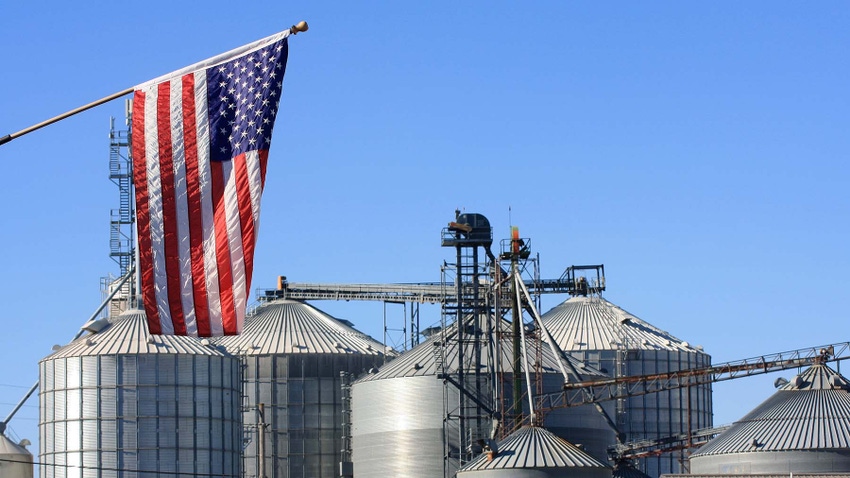
Super Bowl LVIII and the 2022 Census of Agriculture had two very important similarities: both were eagerly anticipated by all but for those of us with skin in the game, both events moved the price needle very little.
For example, I made zero money on my prop bets during the Super Bowl – I won on bets that Reba wouldn’t wear a hat during the national anthem and that Taylor Swift would be wearing a black top but lost it all on all bets football-related and that Jason Kelce didn’t take off his shirt. And USDA’s release of the 2022 Census of Agriculture had little to no impact on grain prices in Tuesday’s trading session.
The 2022 Census of Agriculture published by USDA’s National Agricultural Statistics Service yesterday pointed to a continuation of consolidation trends that have persisted across the Heartland over the past couple decades: farm numbers are shrinking but farm sizes are growing larger.
In 2022, USDA reported 1.9 million farms in the U.S., down 7% from five years prior. But during that time, average farm size increased 5% to 463 acres, reflecting consolidation of small and medium-sized farms into larger enterprises.
Business governance and legal structure has been a hot topic at farmer meetings this winter. As farms grow larger physically and fiscally – U.S. farm income broke records previously set in the 1970s and 1940s in 2022 – operators are turning to more sophisticated methods of running their operations.
The number of families and individuals, partnerships, and other entities have declined 8% in the past five years. But during that same time, the number of farm corporations has increased 9%, indicating that these larger farms are opting for more legally sound structures to ensure feasible transitions to the next generations.
The aging farmer…myth?
Secretary of Agriculture Tom Vilsack expressed concern at these statistics following USDA’s release of the 2022 Census of Ag, further noting that the average operator age in 2022 rose to 58.1 years old from 57.5 years old five years prior.
“This survey is a wake-up call,” Vilsack declared. “It’s asking the critical question of as a country: Are we OK with losing that many farms? Are we OK with losing that much farmland? Or is there a better way?”
Even though the data looks concerning at first glance, I’ll argue that there are a LOT of reasons to be optimistic about the future of this industry. Table 52 of the 2022 Census of Agriculture highlights producer characteristics and shows a couple of interesting insights.
Yes, farmers are growing older at a rapid rate – there is no denying that. Over 63% of farmers in the 2022 Census of Ag were 55 years old or older.
But more younger generations have been returning to the farm in the past decade. Operators under the age of 25 increased 12% in the past five years, ages 25-34 increased 2%, and ages 35-44 increased 9% during that time.
Further evidence the younger generation is coming back to the farm en masse? Five years ago, only 27% of producers had been operating a farm business for 10 or fewer years. In 2022, that proportion had grown to 30%.
The past two decades have provided some of the best returns to agriculture in the history of this country. This has improved the financial viability of farms and allowed operations to grow not only in farm size, but operator quantity as well. After years of the media bemoaning the “aging farmer,” it seems like there are increasing opportunities for younger generations to take the helm.
My dairy farm conundrum
The Census is important because it provides a cumulative look at all aspects of U.S. agriculture – not just the regular grain and livestock market reports that we cover on this website. These figures are used for a myriad of purposes, though most notably including policy analysis and creation as producers hope that Congress takes up farm bill discussions this year after it expired last year.
“This survey isn’t just about agriculture,” Vilsack emphasized. “It’s a map and a guide to a better and more open future.”
But the statistics hit close to home. I grew up on a 300-cow dairy farm in Hill Country in Northwestern Illinois (I see you, Jo Daviess County!). Over the past decade or so, our farm has expanded to include 200 head of dairy-beef and regular beef steers and 70 cow-calf pairs as well as custom beef retail sales.
Dairy farms only numbered 36,024 in the 2022 Census of Ag, down by over a third since the last census was conducted in 2017. In fact, there are 89,017 fewer dairy farms in the U.S. in 2022 than there were in 1997.
Secretary Vilsack emphasized finding new streams of revenue for small and medium sized farmers to ensure viability for rural communities. For those of us who have been enduring in the medium-sized-farm space, adding these new business units have helped to keep us going over the past two decades as competing row crop production has expanded.
It is my hope that a farm bill – which will hopefully be picked up for discussion at some point – uses the 2022 Census of Agriculture to provide equitable resources to Rural America to ensure my young nieces and nephews – and my dog, Stella – have a viable future in this industry. Tuesday’s data findings are reassuring that younger generations are eager to return to the farm, provided they can overcome the economic barriers to ultimately reach success.
Because even though I love Taylor Swift and Reba, my Super Bowl prop bets aren’t bringing home the bacon! We need this industry to stay strong for future generations so I can remain gainfully employed as well!
For more information, find the complete 2022 Census of Agriculture publication at NASS.USDA.gov.
About the Author(s)
You May Also Like






